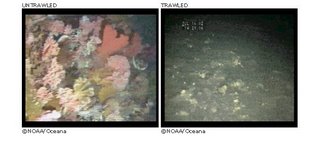The Japanese Government Continues to Slaughter Whales

Greenpeace looks on as a Japanese ship takes a whale
Many think that we saved the whales in the 1980’s, but Japan has been conducting “scientific research” on whales for years. Each year, the Japanese government slaughters 850 minke whales. This year, they have announced plans to expand their “research” to kill 50 endangered humpback whales, and 50 endangered fin whales, in addition to their usual minke slaughter.
It’s been twenty years since commercial whaling was banned, and many whale species still tetter on the brink of extinction. All the while, Japan continues slaughtering hundreds of whales every year in the name of "science."
The Japanese government has been using a loophole in international law to continue commercial whaling under the pretext of research. Last year, they doubled the number of whales they killed in the Southern Ocean, including 853 minke whales and 10 endangered fin whales. Japan has also announced plans to start targeting endangered humpbacks—unless they can be stopped, and that’s what Greenpeace is going to try and do.
Last year, Greenpeace, the Humane Society of the U.S., and the Environmental Investigation Agency targeted the whaling business like never before by hitting them where it hurts—the bottom line. They traced the three largest shareholder companies in the Japanese whaling fleet to subsidiary companies like Gorton's of Gloucester—right here in the U.S. Afterwards, Greenpeace sent two of their ships, The Arctic Sunrise and the Esperanza, to confront the Japanese whaling fleet in the Southern Ocean, as well as to expose the shareholders for their involvement. After just 4 months of targeting these businesses, all three companies divested their shares in the Japanese whaling fleet. A huge victory!
However, according to Greenpeace, at this year's International Whaling Commission meetings, the victory for whales was too close for comfort. Japan narrowly lost its bid to remove protection from dolphins, porpoises, and small whales; abolish the Southern Ocean Whale Sanctuary, impose secret ballot voting, and evict Greenpeace from attendance. However, Japan did earn a simple majority in the last days of the meetings, by a mere 1 vote.
That's why Greenpeace plans to be back in the Southern Oceans again this year, and will redouble their efforts at next year's IWC meetings in Alaska.
The Bush Administration must use the full weight of its diplomatic resources to encourage new pro-conservation countries to join the IWC, to aid existing pro-conservation members to attend next year's meeting, and urge pro-whaling nations to reconsider their positions. At next year's meetings in Alaska, it is imperative that high level State Department diplomats attend to send a powerful message to IWC members that the U.S. is serious about whale conservation. –Greenpeace





